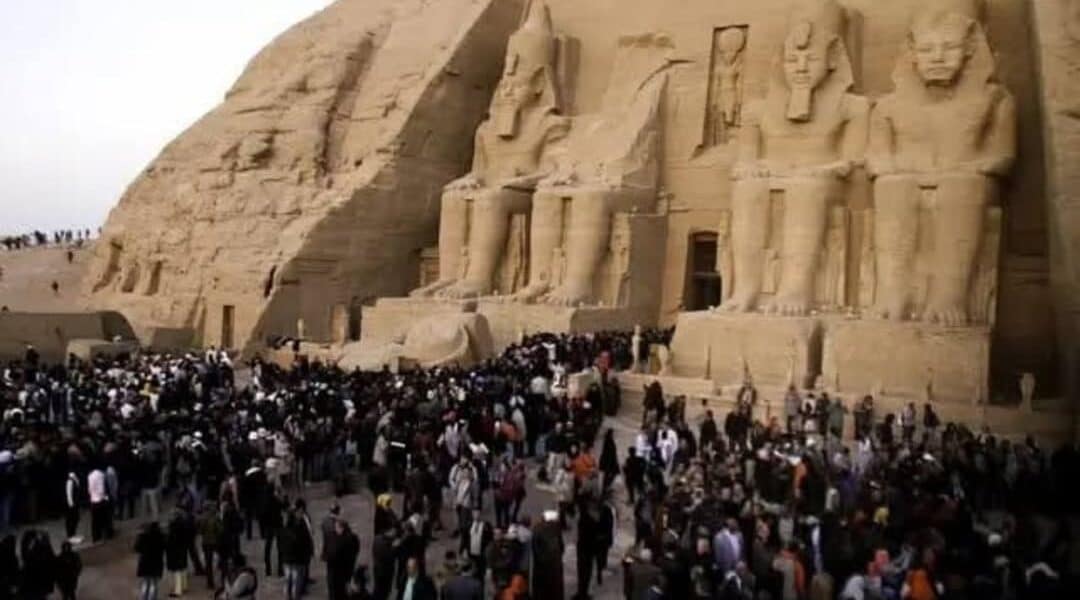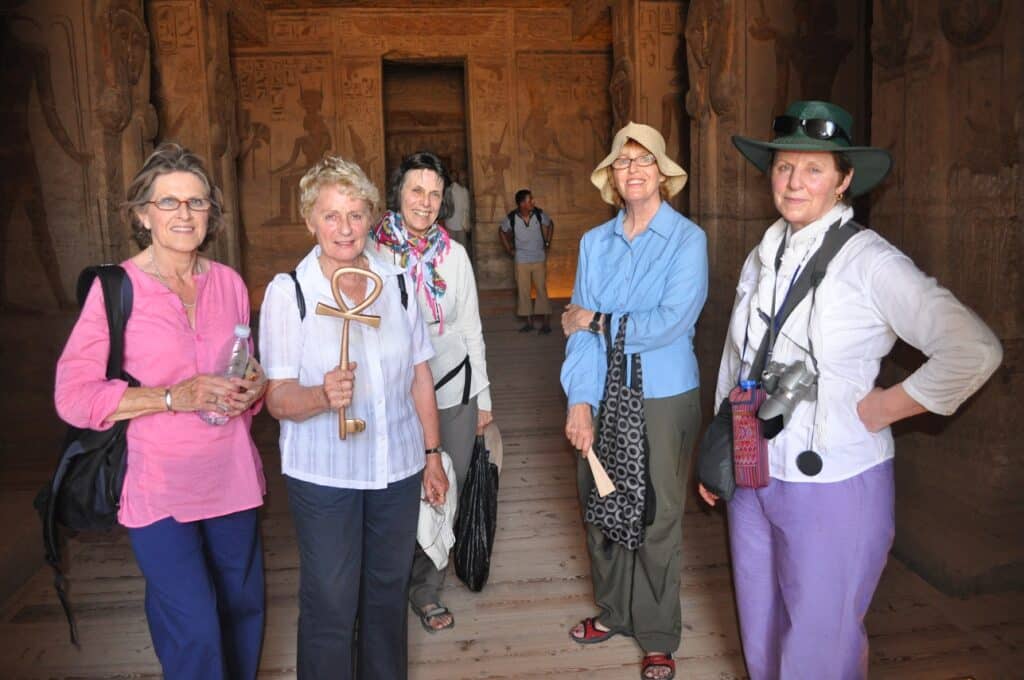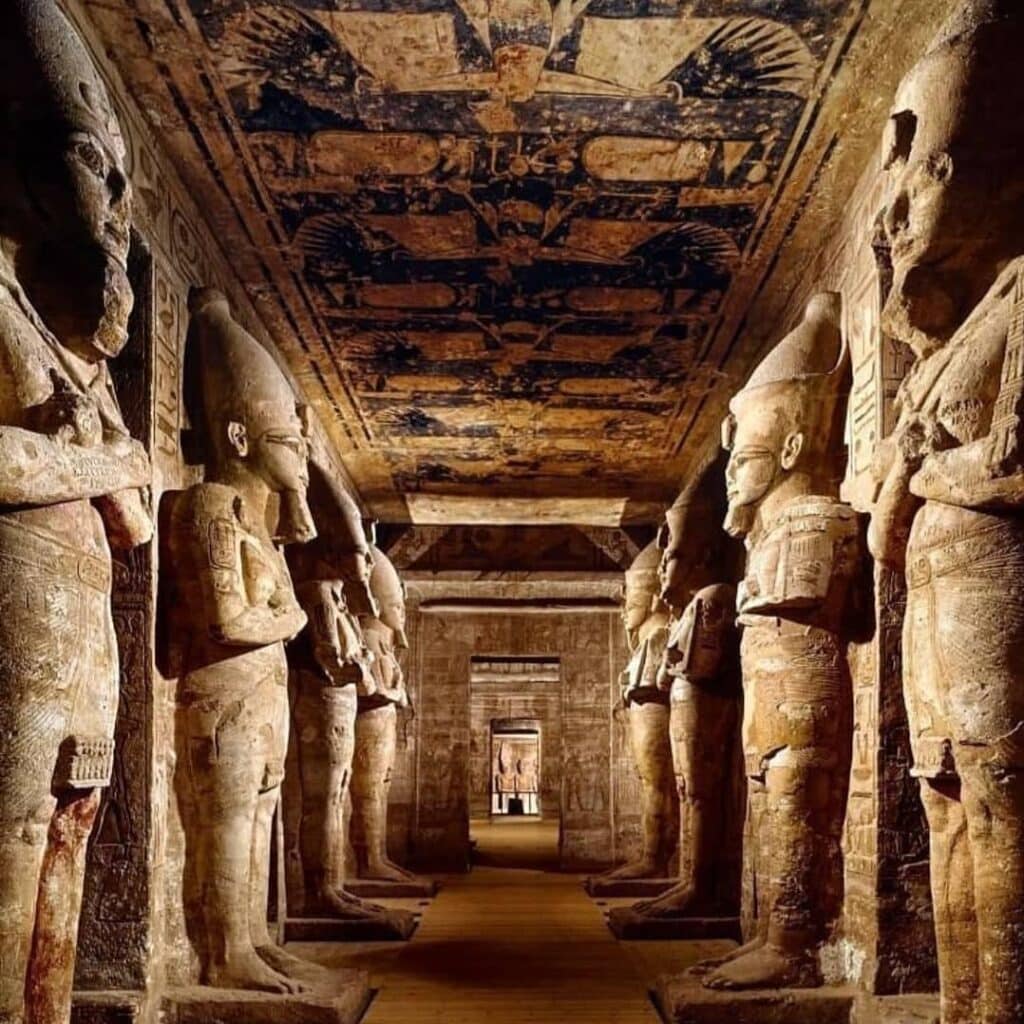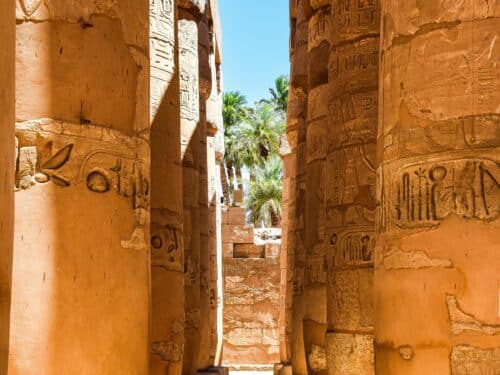

Journey to Abu Simbel, Ramesses II’s most dramatic temple. Explore the history, the famous Sun Festival, and the heroic UNESCO transfer across Lake Nasser. Book your exclusive excursion with My Egypt Travel.
👑 Abu Simbel: The Pharaoh’s Ultimate Declaration

Located deep in Nubia, on the southern banks of Lake Nasser, Abu Simbel is not just an archaeological site; it is a declaration of power, a monument of love, and a testament to modern engineering triumph. Built by the most prolific pharaoh of all, Ramesses II (c. 1279–1213 BCE), the two massive rock-cut temples stand as the most dramatic and awe-inspiring structures in all of Egypt.
For the American and European traveler, a visit to Abu Simbel is often the grand finale of an Egyptian journey, combining the timeless spectacle of ancient power with a profound connection to 20th-century conservation efforts. This non-conventional guide, brought to you by My Egypt Travel, explores the dual majesty of Abu Simbel—both its ancient artistic genius and its modern heroic salvation.
The Power of Two: A Non-Conventional Perspective
Abu Simbel comprises two temples: the massive Great Temple dedicated to Ramesses II and four major gods, and the smaller Small Temple dedicated to his Great Royal Wife, Nefertari. This pairing underscores Ramesses’ unique ambition, elevating his queen to near-divine status alongside him—a rare display of power and affection that resonates strongly with contemporary audiences.
I. The Great Temple: Ramesses II’s Divine Ego
The Great Temple is carved directly into the cliff face, its façade dominated by four colossal seated statues of Ramesses II, each standing over 20 meters high.
1. The Colossi and the Façade
The four enormous statues immediately convey Ramesses’ self-perception as a god on Earth. Between their legs are smaller, but still sizable, statues representing his mother, wife, and children.
- Historical Context: The temple was strategically placed to overlook the Nile, intended as a dramatic display of Egyptian power to any approaching Nubian tribute-bearers, securing the southern frontier.
- Explorer’s Tip: Take time to observe the hieroglyphic inscriptions carved on the legs of the colossi, including graffiti left by Greek mercenaries centuries after Ramesses, underscoring the site’s long-standing fame.
2. The Hypostyle Hall and Inner Sanctuary
Inside, the temple is an intricate labyrinth of chambers and halls, carved deep into the rock. The Hypostyle Hall features more statues of Ramesses II depicted as Osiris.
- The War Chronicle: The walls are richly decorated with reliefs depicting the Battle of Kadesh, where Ramesses II fought the Hittites. These dynamic scenes serve as a stunning, visual war chronicle of the New Kingdom’s military might.
II. The Temple of Nefertari: A Monument of Love

The smaller temple, dedicated to the goddess Hathor and Queen Nefertari, is famous for its rarity and its message of royal affection.
3. The Queen’s Unique Status
The façade is unique because the statues of Nefertari are depicted the same height as the colossal statues of Ramesses II—a distinction rarely granted to a queen in ancient Egyptian art, affirming her central importance.
- Interior Beauty: The interior reliefs are particularly elegant and graceful, focusing on themes of goddesses and royal rituals, offering a softer, yet powerful, contrast to the martial themes of the Great Temple.
III. The Modern Miracle: The UNESCO Rescue
The most compelling aspect of Abu Simbel for the modern traveler is the dramatic story of its relocation.
4. The Threat and the Global Appeal
Following the construction of the Aswan High Dam in the 1960s, the rising waters of Lake Nasser threatened to permanently submerge the temples. UNESCO launched an urgent international appeal to save the site.
5. The Relocation Project
Between 1964 and 1968, the two temples were meticulously dismantled into massive blocks (over 1,000 pieces), lifted 65 meters up the cliff face, and reassembled on a new site constructed to look exactly like the original.
- Engineering Feat: This monumental project, which cost over $40 million, is widely regarded as one of the greatest feats of archaeological engineering and conservation in human history. Witnessing the reassembled site is to pay homage to a modern miracle of global cooperation.
IV. The Solar Phenomenon: The Sun Festival
The temples were engineered with astronomical precision to align perfectly with the sun on two specific days of the year.
6. The Sun Alignment
Twice a year (originally on February 21 and October 21; slightly shifted due to the relocation), the rising sun’s rays penetrate the inner sanctuary of the Great Temple, illuminating the statues of Ramesses II and the three gods seated there, leaving the statue of the god of darkness, Ptah, perpetually in shadow.
7. The Abu Simbel Festival
The solar alignment days have become the basis for the Abu Simbel Sun Festival—a major cultural event featuring traditional dancing and music.
- Traveler’s Privilege: Experiencing the festival is a rare opportunity to witness ancient science, modern engineering, and vibrant Nubian culture all at once. My Egypt Travel offers specialized itineraries focused on securing access and accommodation for this high-demand event.
V. Planning Your Exclusive Abu Simbel Excursion with My Egypt Travel

Due to its remote location (a five to six-hour drive from Aswan, or a short flight), visiting Abu Simbel requires meticulous logistical planning.
Optimizing the Journey
- The Early Morning Drive: The traditional, non-conventional way to visit is via the convoy road, departing Aswan before dawn. This allows you to arrive as the sun rises, witnessing the temples emerge from the darkness—a truly dramatic effect.
- The Flight Option: For travelers prioritizing speed and comfort, My Egypt Travel arranges round-trip flights from Aswan, maximizing your time at the site and minimizing travel fatigue.
The Nubian Link
A visit to Abu Simbel is best paired with deeper cultural dives in Aswan and on the shores of Lake Nasser. We ensure the journey feels like an extension of the tranquil Nubian experience, rather than just a quick trip.
- Accommodation: While most travelers visit on a day trip, our luxury packages can include an overnight stay in the area, offering the serene experience of seeing the temples lit up at night and revisiting them in the quiet morning before the crowds arrive.
🔑 Conclusion: The Monument of Endurance
Abu Simbel is a powerful symbol of endurance—the ambition of Ramesses II, the steadfastness of the local stone, and the resolve of modern humanity to preserve the treasures of the past. It offers a narrative of history that is both monumental and deeply personal.
Ready to witness the colossal power of Ramesses the Great and the miracle of the modern world? Let My Egypt Travel guide your unforgettable expedition to Abu Simbel.




